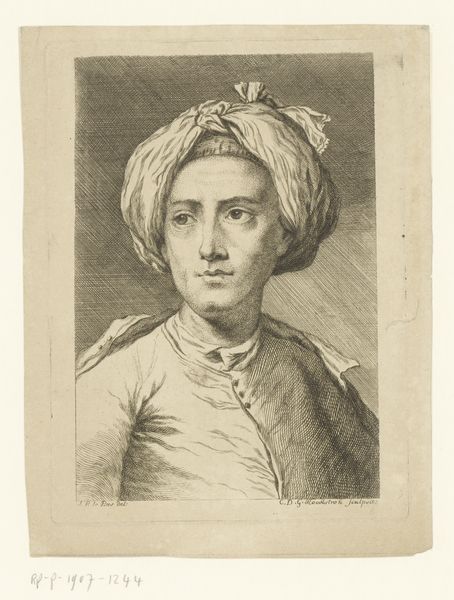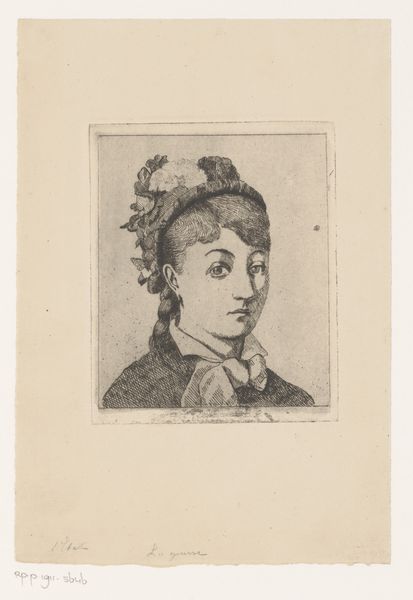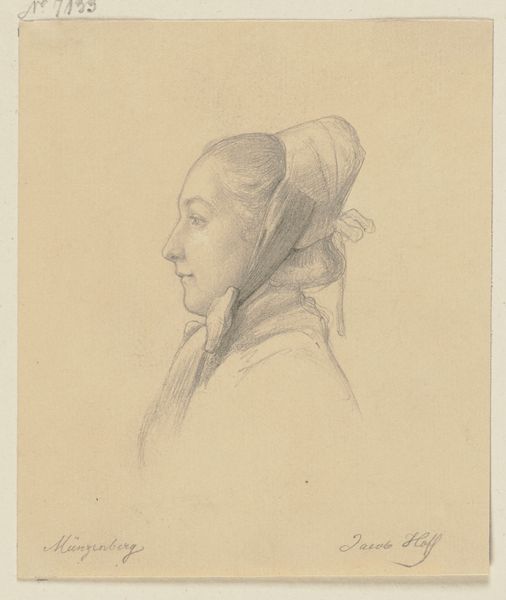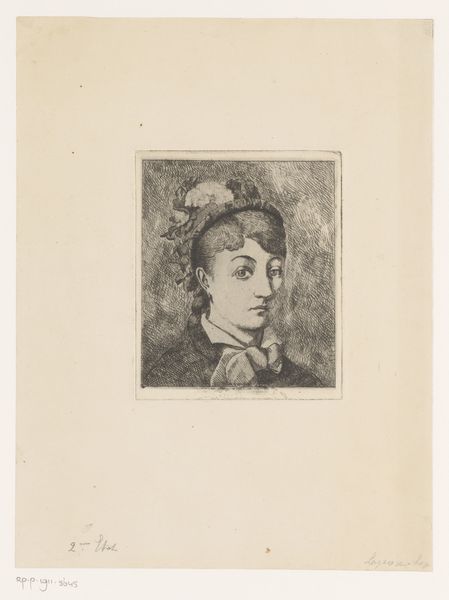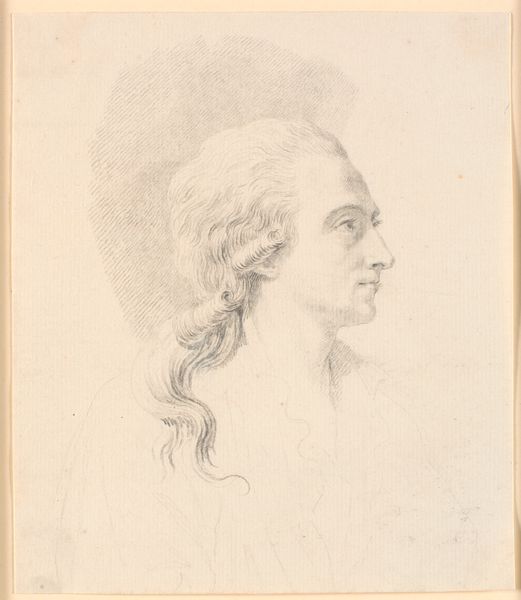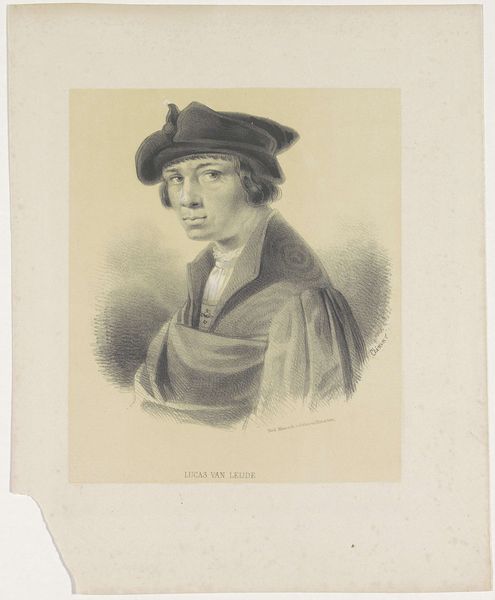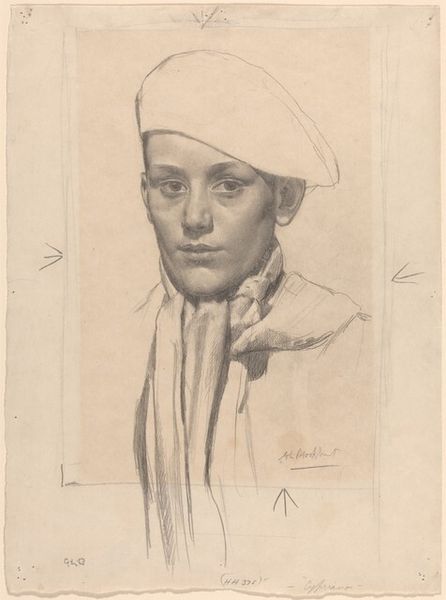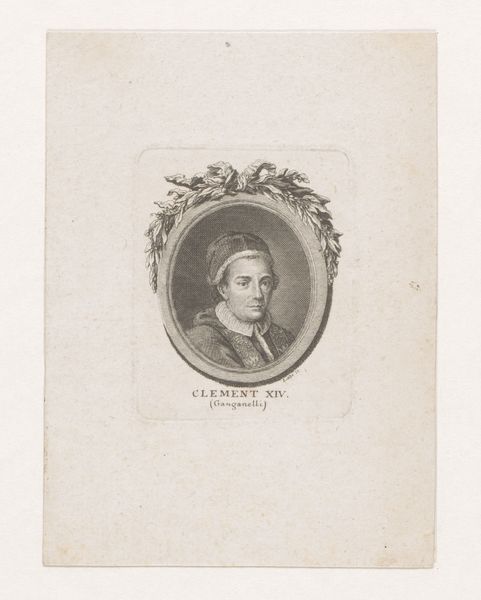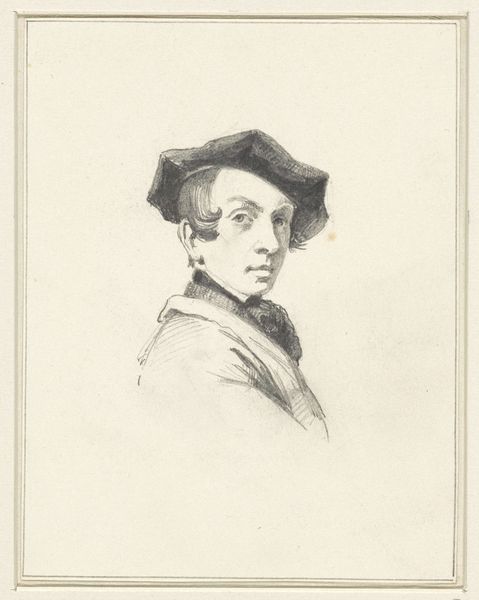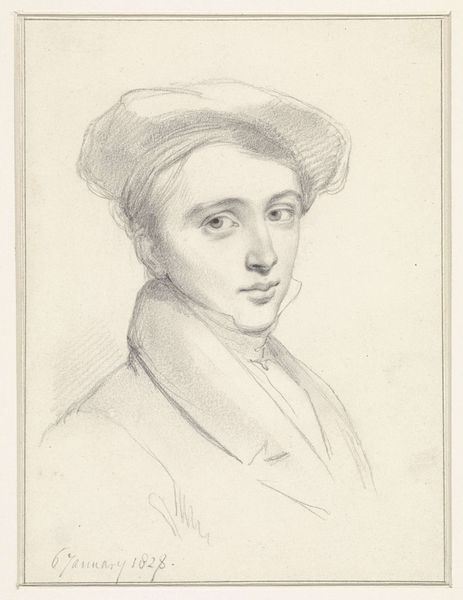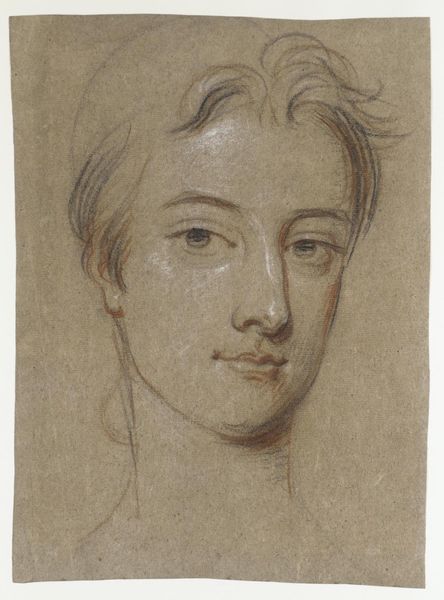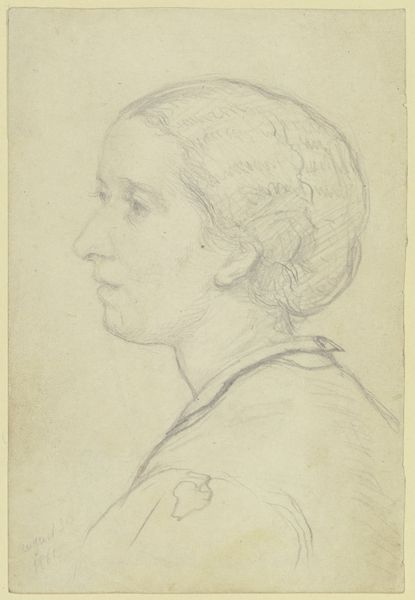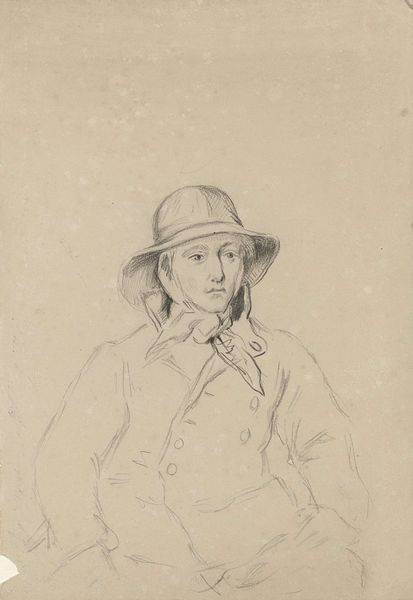
drawing, paper, pencil
#
portrait
#
drawing
#
paper
#
romanticism
#
pencil
#
portrait drawing
Dimensions: 160 mm (height) x 120 mm (width) x 26 mm (depth) (monteringsmaal), 145 mm (height) x 103 mm (width) (bladmaal)
Curator: Standing before us is a drawing executed in 1820, a portrait of "Paul Harro Harring" by H.W. Bissen, currently residing here at the SMK, Statens Museum for Kunst. It is rendered with pencil on paper. Editor: There’s a delicacy to the shading…the material’s subtle response to pressure really emphasizes the vulnerability of the subject. And I love the starkness of the paper. It feels raw, unfinished. Curator: Indeed. Bissen, better known for his sculptures, displays remarkable control with pencil here. Harring was a poet and revolutionary… the piece possibly speaks to the Romantic era's fascination with individual spirit and expression. Consider the cultural and political turmoil in Europe at this time; images held immense power in shaping public opinion and national identity. Editor: Revolution indeed! I can see hints of graphite dust clinging to the page fibers if you get in close enough. It's such a manual, physical process, isn’t it? Think of Bissen's labour here and the relative inexpensiveness of the materials - how democratizing. It allowed for wider circulation than say an oil portrait commissioned by the elite. Curator: An important consideration, highlighting the politics embedded even in material choices. And while democratizing, it's also important to remember how access to materials such as quality paper and pencils might still be limited by socio-economic status at the time. The reception of this image, how it was viewed, circulated, and by whom, shaped its very meaning. Editor: The artist’s relationship to Harring also plays a role here. One wonders if Bissen had sympathies with the subject, if those translated into his artistic output, in the application of pencil to page and even in the selection of this unique paper. Curator: Certainly food for thought as we view art of this period and, I would argue, still applicable today. It underscores the complex interplay between artist, subject, material and historical forces that contribute to a portrait's meaning. Editor: Absolutely. The means of production, though seemingly simple here, carries immense weight in how we understand both Bissen’s artwork and Harring himself. Thank you for shedding some light on it.
Comments
No comments
Be the first to comment and join the conversation on the ultimate creative platform.
